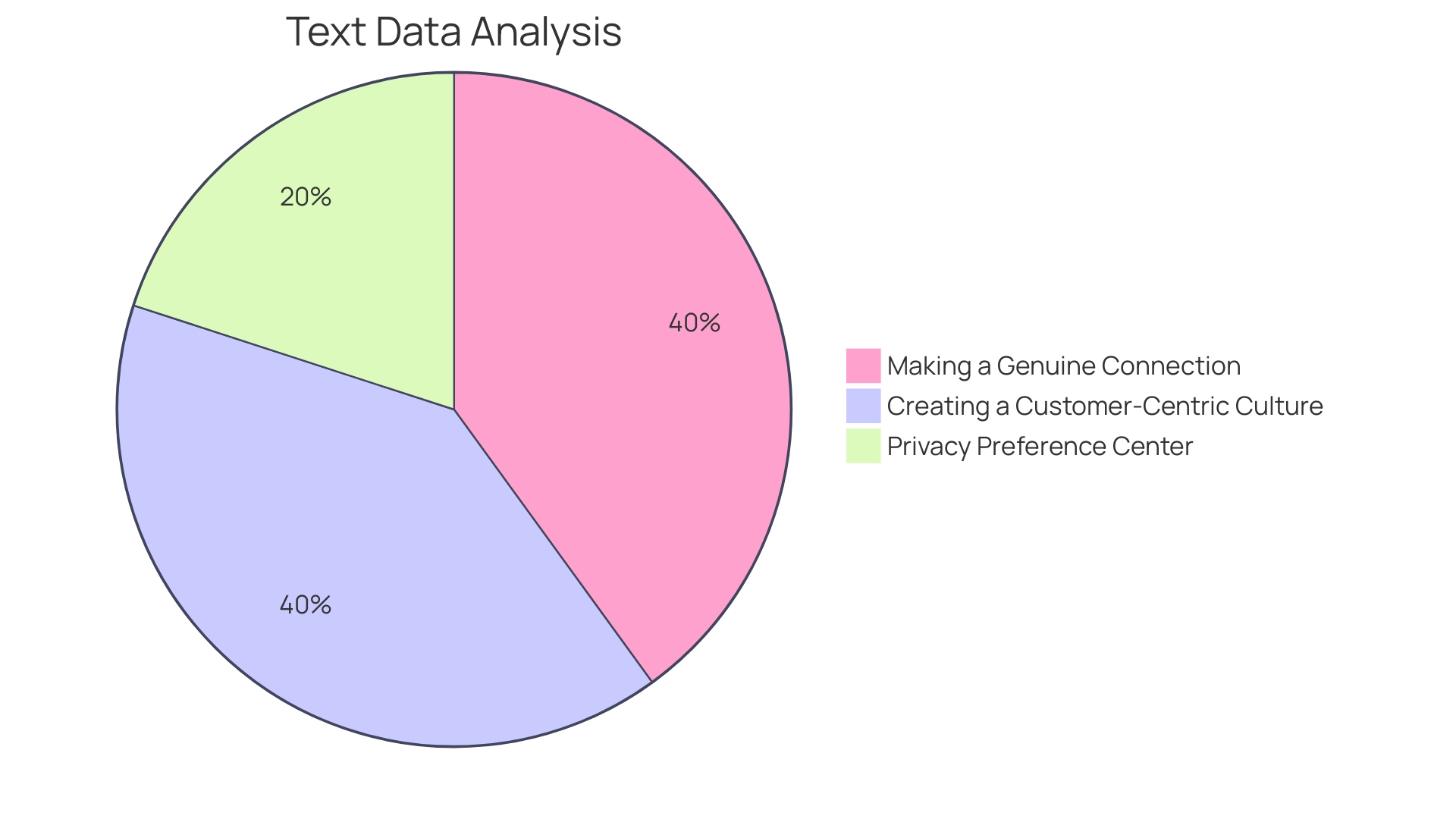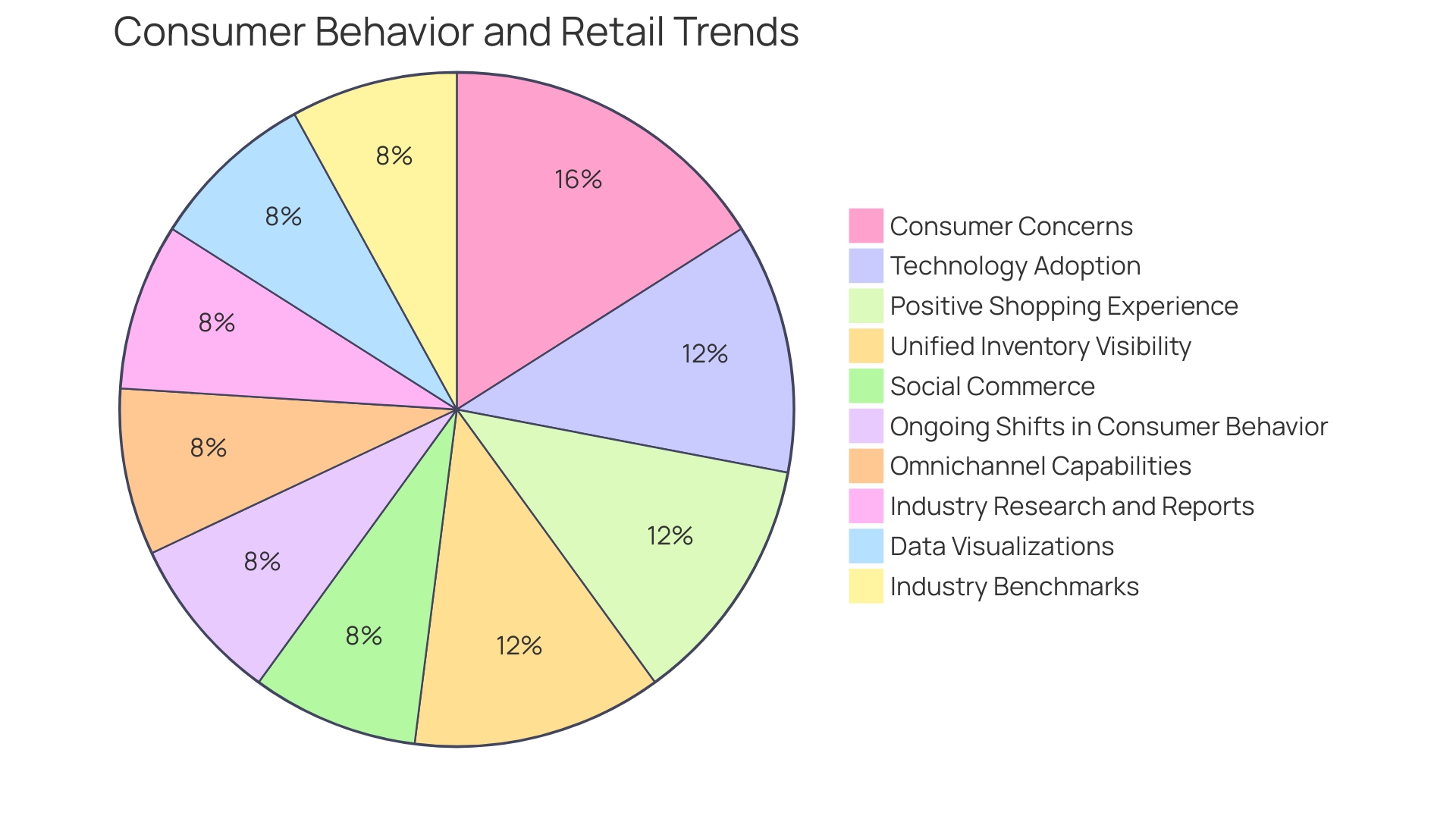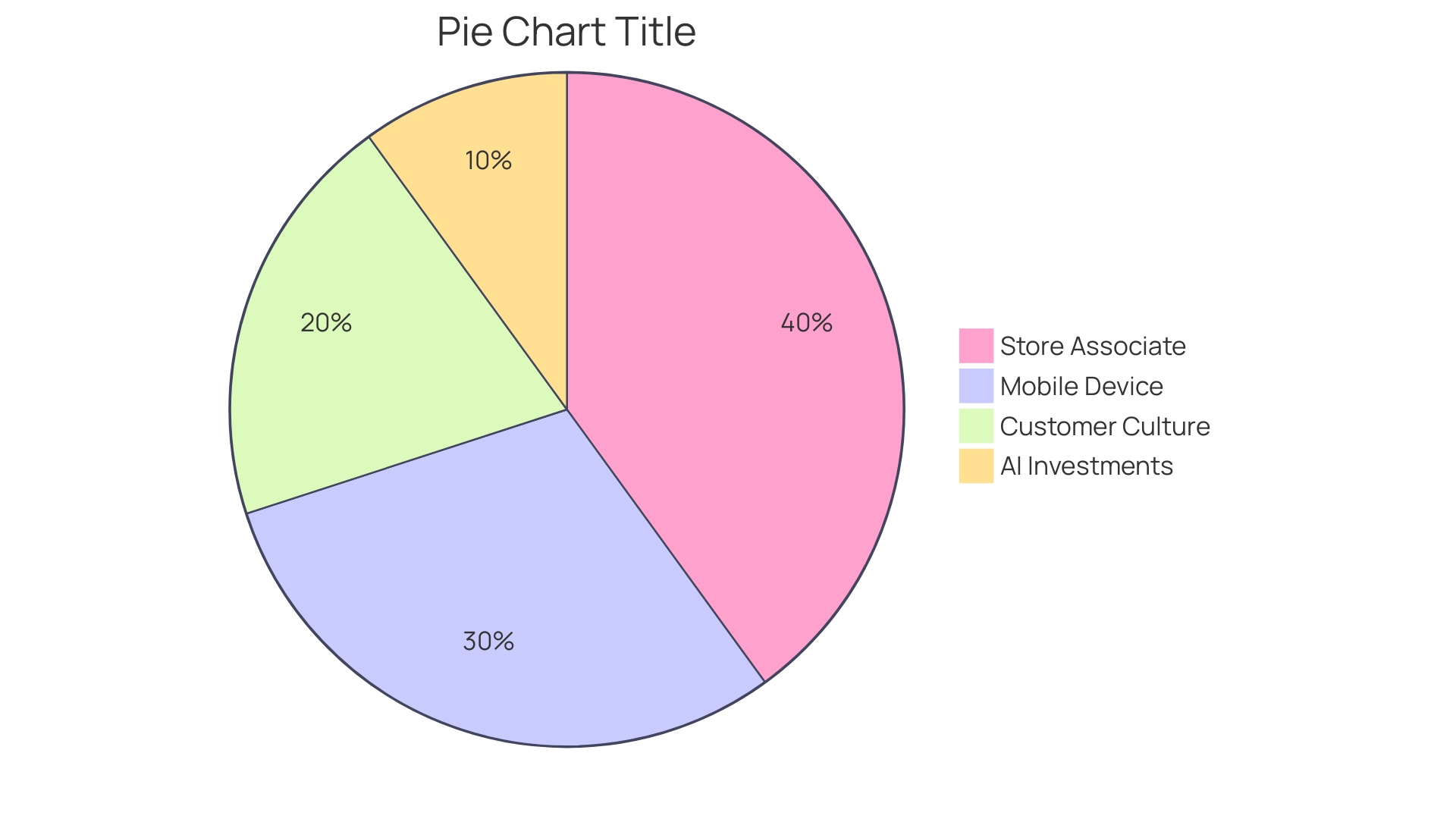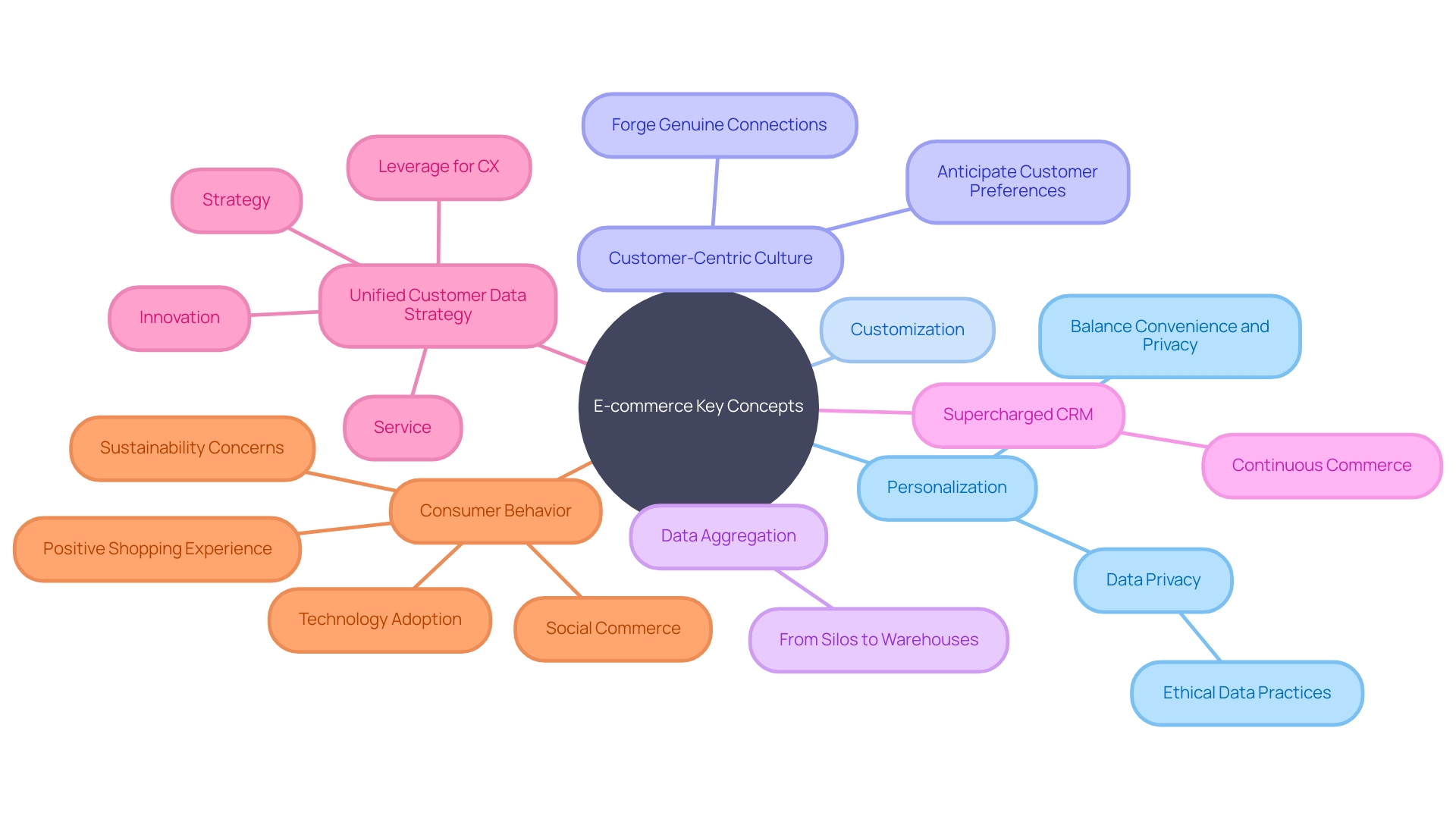Introduction
Understanding the nuances between personalization and customization is crucial for any e-commerce enterprise aiming to provide exceptional consumer experiences. Personalization is the craft of shaping the shopping journey based on individual customer data, preferences, and past behavior. It's about leveraging tools such as artificial intelligence (AI) to offer shopping experiences that resonate personally with each customer.
Customization, conversely, empowers the customer with choices, allowing them to alter aspects of the products or services to their liking. Both strategies are part of the wider trends in e-commerce, where delivering personalized omnichannel marketing and harnessing the potential of AI are becoming increasingly important. These approaches can lead to more meaningful connections with customers, as echoed in the sentiment that personalization is akin to being greeted by name in your favorite coffee shop.
Indeed, according to a McKinsey report, personalization is not just a nice-to-have but a significant growth driver, with US companies potentially unlocking $1 trillion in additional revenue through enhanced personalization efforts. As the e-commerce landscape evolves, understanding and implementing these concepts can create a competitive edge and foster customer loyalty.
Definitions and Key Differences
Understanding the nuances between personalization and customization is crucial for any e-commerce enterprise aiming to provide exceptional consumer experiences. Personalization is the craft of shaping the shopping journey based on individual customer data, preferences, and past behavior. It's about leveraging tools such as artificial intelligence (AI) to offer shopping experiences that resonate personally with each customer. For instance, Zara's integration of AI throughout its operations, including supply chain and customer engagement, exemplifies the extent to which personalization can be embedded into a business model.
Customization, conversely, empowers the customer with choices, allowing them to alter aspects of the products or services to their liking. This might include creating operator-generated collections that cater to seasonal trends or specific themes, thus offering a more hands-on shopping experience.
Both strategies are part of the wider trends in e-commerce, where delivering personalized omnichannel marketing and harnessing the potential of AI are becoming increasingly important. These approaches can lead to more meaningful connections with customers, as echoed in the sentiment that personalization is akin to being greeted by name in your favorite coffee shop. Indeed, according to a McKinsey report, personalization is not just a nice-to-have but a significant growth driver, with US companies potentially unlocking $1 trillion in additional revenue through enhanced personalization efforts. As the e-commerce landscape evolves, understanding and implementing these concepts can create a competitive edge and foster customer loyalty.
Personalization: The Art of Tailoring the Experience
E-commerce is rapidly evolving into a highly personalized environment, where the key to customer retention is to offer a shopping experience that is as unique as the individual. Artificial Intelligence (AI) is at the forefront of this revolution, enabling businesses to analyze customer data, such as purchase history and browsing patterns, to provide not just product suggestions, but a curated journey tailored to each customer's preferences.
As Elizabeth Tobey from NICE highlighted during an episode of Amazing Business Radio, the modern concept of personalization is rooted in the 'Channel of Choice.' In today's always-connected era, customers expect the flexibility to interact with brands across multiple platforms, from mobile to physical stores, demanding a seamless experience that respects their preferred mode of communication.
The importance of personalization in e-commerce cannot be overstated. It fosters customer satisfaction by delivering content that is not only relevant and timely but also resonates on a personal level. This approach has proven to enhance customer engagement and loyalty significantly, as evidenced by the growing investment in personalization tools and technologies by leading retailers.
The trend towards this kind of personalized retail experience is driven by consumer demand and is illustrated by innovative partnerships in the startup ecosystem that are constantly pushing the boundaries of e-commerce. As Keith Kirkpatrick from The Futurum Group points out, the integration of physical and digital channels, or 'phygital,' has become an expectation among consumers. They seek efficiency and prioritization of their needs, whether it's confirming product availability on their phone or ensuring a quick pick-up from a local store.
In summary, the power of personalization in e-commerce lies in creating a culture centered around the customer, where every touchpoint is an opportunity to deliver a memorable experience that feels bespoke. Such a strategy is not only essential for standing out in a crowded marketplace but is also the foundation for building lasting customer relationships.
Customization: Putting the Power in the User's Hands
Customization in e-commerce goes beyond simply offering a tailored shopping experience; it puts the power in the hands of the consumer, allowing them to shape their purchase to their exact specifications. This could mean choosing from an array of product attributes such as size, color, or features, or even engaging in the design process themselves. The impact of such customization is substantial, with research indicating a direct correlation between the level of customization and customer satisfaction. A study by Medallia, Inc. highlighted that only a quarter of consumers encounter high levels of personalization in their retail experiences, yet those who do are significantly more likely to report greater overall satisfaction.
The fashion giant Zara exemplifies the successful integration of customization through the use of artificial intelligence (AI), which permeates their entire supply chain. This adoption of AI facilitates a Just-In-Telligent system that optimizes inventory and logistics in real-time, ensuring customers receive personalized service that is both responsive and efficient.
Moreover, the emerging trend of blending digital and physical shopping, termed 'phygital', is a testament to the evolving landscape of e-commerce. Customers now expect to seamlessly switch between online browsing and in-store purchasing, necessitating a unified approach to inventory visibility. As e-commerce continues to innovate, with startups leading the charge, businesses are tasked with finding novel ways to meet the increasing demand for personalization and customization, and those who do so effectively can expect to foster deeper connections with their customers.
Primary Differences Between Personalization and Customization
Understanding the nuances of personalization and customization in e-commerce is essential for crafting superior customer experiences. Personalization harnesses data and algorithms to present content and suggestions that feel bespoke to each user. It's a dynamic process, often automated, where algorithms digest vast amounts of data to predict and adapt to user preferences. For instance, consider the hospitality industry, where personalization can range from tailored room decorations to preferred beverages, using customer data to refine every step of the journey.
Contrastingly, customization places the power squarely in the hands of the consumer, enabling them to shape their experience through direct interaction. It's about providing options and flexibility, much like operator-generated collections that include popular, seasonal, or themed items, allowing users to choose what resonates with them.
Both strategies are integral to modern e-commerce, as evidenced by the increasing role of Artificial Intelligence (AI) in delivering personalized shopping experiences. As we navigate the intersection of art and science in e-commerce, the artistry lies in crafting engaging, unique customer interactions, while the science focuses on leveraging customer data and technological tools to achieve this. In the expansive digital market, where personal connections are paramount, these tailored experiences distinguish businesses and foster lasting customer loyalty. With personalization being a pivotal factor for growth, as highlighted by a McKinsey report, businesses are recognizing the substantial impact it has on consumer satisfaction and overall brand success.
Examples and Use Cases
Understanding the distinction between personalization and customization is essential in the realm of e-commerce. Personalization involves leveraging data to offer tailored recommendations that resonate with an individual's shopping behavior. For instance, if someone frequently purchases fantasy novels, an e-commerce platform might suggest the latest bestseller in that genre. On the flip side, customization is about giving control to the customers, allowing them to modify products to their liking. This could range from selecting a preferred color for a smartphone case to engraving a personal message on a piece of jewelry.
The demand for such personalized and customized experiences is mounting, driven by both consumer expectations and the advancements in retail technology. Reports suggest that a staggering 81% of both business buyers and consumers consider the shopping experience provided by a company as crucial as the products or services offered. However, 35% of shoppers feel their expectations for personalization are not being met, with 57% receiving irrelevant communications from retailers. This highlights a significant opportunity for e-commerce platforms to enhance their personalization strategies.
Advancements in AI and machine learning are shaping the future of personalization. These technologies allow for sophisticated data analysis, enabling brands to offer highly relevant content and product suggestions. Moreover, innovative retail formats, such as checkout-free stores powered by advanced technologies like Zippin, are redefining convenience and personalization in physical spaces. Such systems use cameras and sensor-laden shelves to track purchases, offering a seamless shopping experience that meets the needs of today's fast-paced world.
E-commerce companies that invest in personalization and customization technologies not only cater to consumer desires but also set themselves apart in a competitive market. The key is to continuously improve tools and processes to create a shopping environment that feels familiar and considerate to each customer, echoing the sentiment of walking into a favorite coffee shop where the barista knows your order by heart.
Choosing the Right Approach: Considerations
Navigating the nuances of personalization and customization in e-commerce can significantly impact customer satisfaction and brand loyalty. Modern consumers have shown a clear preference for experiences tailored to their needs and interests. Research from Medallia indicates that customers who encounter high levels of personalization are likely to express greater overall satisfaction. In fact, those experiencing personalization scored as 9 or 10 out of 10 are much more likely to report very high satisfaction levels. Conversely, a lack of personalization corresponds with lower satisfaction rates. Additionally, a mere 26% of retail consumers report experiencing this degree of personalization, suggesting a substantial opportunity for e-commerce platforms to enhance their user experience.
While personalization can lead to increased spending and customer loyalty, the 'personalization paradox' presents a challenge. Consumers crave the convenience of personalized experiences but are increasingly concerned about privacy and data security. With regulations evolving and consumer awareness on the rise, striking a delicate balance between personalized service and respectful data handling has become essential for e-commerce businesses.
One way to address this is through thoughtful user experience (UX) design that prioritizes personalization while respecting user privacy. For instance, implementing relevant filtering features can streamline product searches without intruding on privacy. An outdoor plant e-commerce site could offer location-based plant suggestions without extensive data collection, ensuring customers find what they need with ease.
The integration of personalization into your e-commerce strategy should be informed by the nature of your products or services. Operator-generated collections, for example, can offer a blend of popular and seasonal items tailored to customer preferences. This level of customization not only meets but anticipates customer needs, fostering a connection that encourages repeat business.
In summary, personalization and customization in e-commerce are not just about enhancing sales; they're about building lasting relationships with customers by providing them with a shopping journey that feels personal, relevant, and respectful of their data preferences.

Expectations of the Target Audience
As customers increasingly seek experiences that resonate with their unique needs and preferences, the importance of differentiating between customization and personalization in e-commerce becomes paramount. Customization empowers customers to specify their desires, creating a product or service that aligns perfectly with their individual requirements. Personalization, on the other hand, involves leveraging data and insights to deliver an experience that feels tailored to the customer's behaviors and preferences without their direct input.
Recent insights from a survey by Morning Consult for Walmart highlight the shift towards what is termed 'Adaptive Retail.' This approach emphasizes the necessity for retailers to proactively anticipate and meet customer needs, streamline their decision-making process, and curate highly personal shopping experiences. Suresh Kumar of Walmart Inc. underscores the significance of understanding the 'Why' behind purchases to create these personalized interactions.
Supporting this, current trends in e-commerce indicate that dynamic performance expectations are shaping consumer behavior. Customers' expectations evolve over time, not just concerning the product or service but also with their digital interactions. They anticipate effortless navigation and seamless checkout experiences, which are now baseline digital expectations.
Moreover, explicit expectations regarding price, quality, and delivery time remain critical. A shopper anticipating a mobile phone within a certain budget exemplifies the importance of meeting these explicit expectations to secure a sale. Implicit expectations also play a crucial role, as they are formed based on the perceived reputation and feedback about a brand.
In the context of omnichannel marketing, the art lies in crafting engaging and memorable customer experiences. The science involves using data insights to measure and enhance marketing efforts. Together, they form the foundation for delivering personalized experiences at scale, which are essential to fostering customer loyalty and achieving sustainable growth.
In conclusion, understanding and meeting the various expectations of your audience—be it through customization or personalization—is fundamental. By embracing the art and science of personalized omnichannel marketing, retailers can provide experiences that not only satisfy but also delight their customers, securing their position in the competitive landscape of e-commerce.

The Nature of Your Product or Service
Determining whether customization or personalization is the most effective strategy hinges upon the nature of your products or services. For a vast array of customizable items like clothing or furniture, allowing customers to tailor aspects such as color, size, or materials may enhance their shopping experience. In contrast, for more standardized products where customer preferences can be predicted, personalization based on data is key. Personalization is about crafting an experience that feels exclusive to each customer, akin to having a hotel room prepared with your preferences in mind, or receiving marketing messages that speak directly to your interests.
The power of personalization is evident in the hospitality industry, where the approach extends far beyond mere room customization. It involves thoughtful adjustments to content, offers, and services that resonate with the customer's lifestyle and desires, fostering a deeper bond with the brand. A McKinsey report underscores the importance of personalization, suggesting that U.S. companies could unlock an additional $1 trillion in value by focusing on personalized customer experiences.
Artificial Intelligence (AI) plays a pivotal role in achieving effective personalization. It sifts through customer data to identify patterns and preferences, thereby refining product development, marketing strategies, and pricing. AI not only tailors marketing messages but also simplifies the process for customers to offer feedback, aligning products and services more closely with their needs.
Recent advancements in AI and machine learning have revolutionized the ability of brands to understand and engage with consumers. This technological leap forward empowers even smaller brands to compete by creating individualized experiences. The digital landscape is constantly evolving, with startups driving e-commerce innovation and larger brands, such as Nike and L'Oréal, setting the standard for a personalized customer experience.
In this highly connected world, the emphasis on personalization extends to the ethical use of customer data. The 'personalization paradox' highlights the tension between the convenience of personalized services and concerns over privacy. As customer data is increasingly seen as an individual asset rather than a corporate resource, businesses navigate the complexities of user consent and ethical data usage, along with changing regulations.
Ultimately, personalization is not a one-time effort but a continuous process that demands consistent data collection and management across all touchpoints. It's about creating a culture centered on the customer, ensuring that every action contributes to a personalized and memorable experience. Brands that understand and anticipate their customers' needs are more likely to retain them, underscoring the significance of personalization in today's digital economy.
Business Goals and Resources
When deciding between personalization and customization for your e-commerce strategy, it's crucial to consider specific business objectives and the tools at your disposal. Personalization is a sophisticated avenue that leverages data analytics and complex algorithms to tailor customer experiences. This level of individualized engagement requires not only investment in cutting-edge technology but also a commitment to understanding and predicting customer behavior. Recent trends indicate a spike in demand from consumers for personalized shopping experiences, with reports showing that a majority of customers value the experience a company provides as much as its products or services.
Conversely, customization provides consumers with the autonomy to tailor products to their preferences, which can translate into a more hands-on approach for businesses. This might involve offering a range of product configurations or allowing for modifications, which in turn may necessitate additional resources to manage these options effectively.
The landscape of e-commerce is rapidly evolving, with artificial intelligence (AI) playing a pivotal role in shaping the future of online retail. AI not only facilitates personalized shopping experiences but also helps businesses understand customer preferences, which can lead to increased satisfaction and loyalty. As we move forward, e-commerce innovations are increasingly being driven by startup partnerships, reflecting a dynamic environment where technology and consumer habits are continuously changing.
The key to navigating this complex terrain is balancing the artistic and scientific aspects of e-commerce. The art lies in crafting engaging and memorable customer experiences, while the science is grounded in the strategic use of customer data and technology to achieve measurable results. As the digital economy grows, encompassing everything from infrastructure to priced digital services, e-commerce is becoming an increasingly vital component of both business-to-consumer and business-to-business transactions.

Challenges in Implementing Personalization and Customization
The art of blending personalization and customization in e-commerce is a nuanced dance that demands a multifaceted strategy. Personalization, for instance, is no mere feat. It involves a sophisticated web of data gathering, analysis, and the seamless integration with existing systems to tailor experiences that resonate personally with customers. However, this sophistication comes with heightened vigilance for privacy and robust data security measures to safeguard consumer trust.
On the flip side, customization presents its own puzzles. Scaling up to accommodate a plethora of product variations and choices can be a Herculean task. Yet, it's a necessary endeavor to deliver on the promise of a unique customer experience. For example, to bypass the need for store associates, retailers are innovating with mobile device solutions that provide in-store recommendations based on local inventory—a testament to the evolution of 'phygital' spaces where the physical and digital coalesce.
The 'personalization paradox' captures the delicate balance between convenience and privacy. The once rampant harvesting of personal data is now being reined in, treating consumer data as an entrusted asset rather than a corporate commodity. This shift, fueled by consumer skepticism, governmental intervention, and market forces, underscores the importance of ethical data practices.
In essence, the journey to effective personalization and customization is marked by creating a customer-centric culture. It's about understanding the customer to the extent that their preferences are anticipated and catered to, much like the familiar barista who knows your coffee order by heart. This level of attention to detail is what distinguishes a brand in today's competitive landscape. As research director Keith Kirkpatrick of The Futurum Group articulates, it's about putting the customer first, an approach that transcends mere transactions to forge connections that feel both relevant and genuine.

Benefits and Drawbacks of Each Approach
The landscape of e-commerce is rapidly advancing with the integration of personalization and customization, each presenting distinct advantages for enhancing the online shopping experience. Personalization, powered by sophisticated data and algorithms, allows companies to curate marketing communications and product suggestions with precision, fostering customer satisfaction and encouraging repeat business. This approach is validated by a Medallia study which found that a substantial personalization level correlates with higher overall satisfaction, revealing that consumers are likely to spend more when their experiences are tailored. Nevertheless, the personalization paradox surfaces as consumers grapple with the convenience of these tailored experiences against the backdrop of data privacy concerns. The shift in perspective towards personal data as an individual asset, not just company property, underscores the importance of ethical data usage and highlights the increasing demand for transparency and consent in data collection practices.
On the flip side, customization places the power of choice directly into the hands of customers, allowing them to personalize products or services to their unique preferences. This empowerment not only augments customer loyalty but also deepens their satisfaction. Despite its clear benefits, customization is not without its challenges, as it may necessitate significant resources and could pose scalability issues for businesses. To address this, companies could look towards custom web solutions which are designed with end-users in mind, ensuring a seamless and satisfying consumer experience. Retail Technology Review suggests that incorporating features such as 'recommended for you' sections can significantly enhance the user experience (UX), driving brand loyalty and fostering a sense of community among consumers. As the e-commerce arena continues to evolve, the onus is on businesses to balance the twin pillars of personalization and customization, ensuring a frictionless and engaging online shopping journey for each customer.
Conclusion
In conclusion, understanding the nuances between personalization and customization is crucial for e-commerce enterprises. Personalization tailors the shopping journey based on customer data and preferences, using tools like AI to offer personalized experiences. Customization empowers customers with choices to alter products or services to their liking.
Both strategies are part of wider e-commerce trends, where delivering personalized marketing and harnessing AI are increasingly important. Personalization fosters customer satisfaction, while customization enhances loyalty.
The choice between personalization and customization depends on the nature of your products or services. AI plays a pivotal role in achieving effective personalization, analyzing customer data to refine strategies. Businesses must navigate data privacy and ethical usage.
Implementing personalization and customization poses challenges like data privacy and resource management. Balancing the artistic and scientific aspects of e-commerce is crucial, with the art focusing on engaging experiences and the science leveraging data and technology.
Understanding and meeting audience expectations is fundamental. Customers seek experiences that resonate with their needs. Personalization extends to ethical data usage and meeting explicit and implicit expectations.
Benefits of personalization include tailored marketing and product suggestions, fostering satisfaction and loyalty. Customization empowers customers and deepens satisfaction. Balancing both ensures a frictionless and engaging shopping journey, driving loyalty and fostering community.





